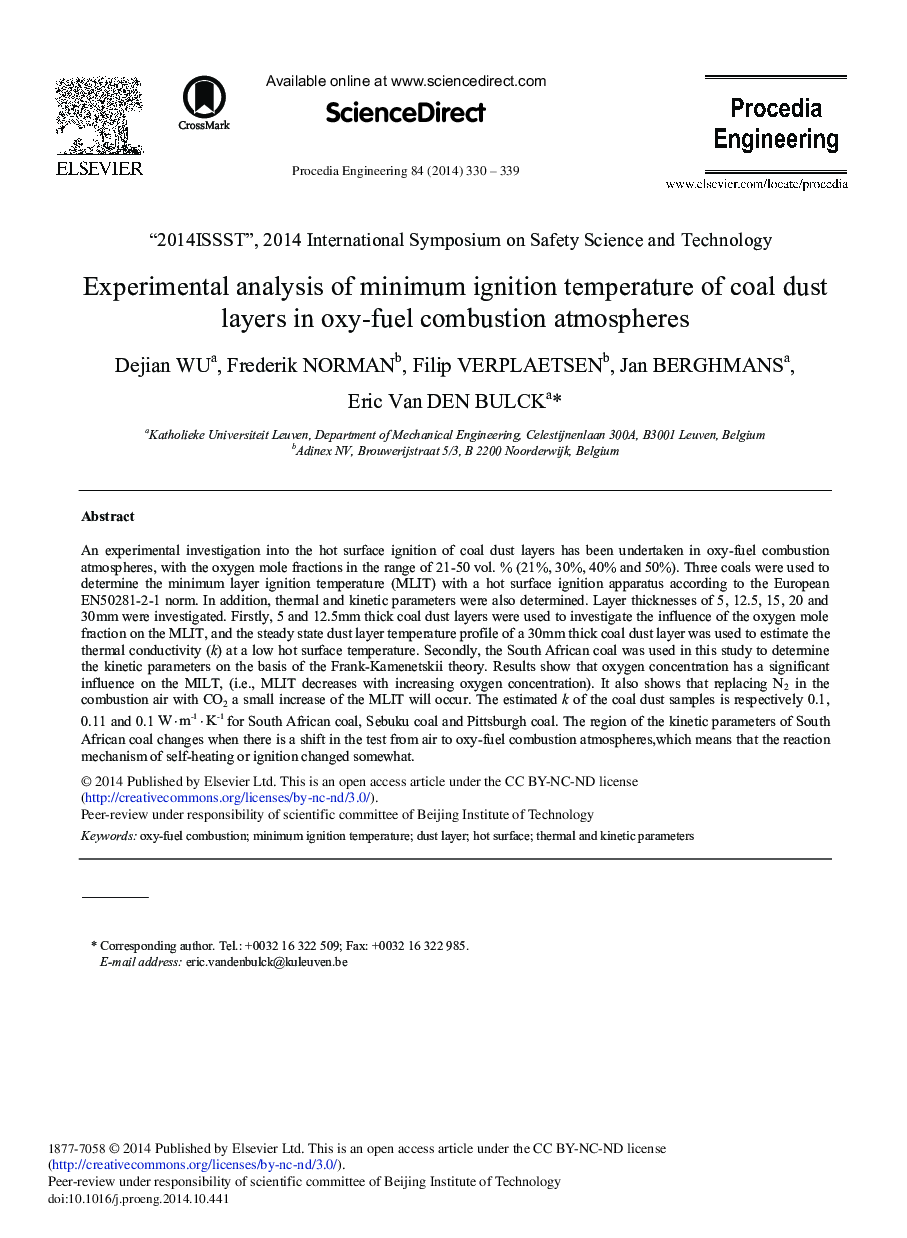| کد مقاله | کد نشریه | سال انتشار | مقاله انگلیسی | نسخه تمام متن |
|---|---|---|---|---|
| 857648 | 1470742 | 2014 | 10 صفحه PDF | دانلود رایگان |
An experimental investigation into the hot surface ignition of coal dust layers has been undertaken in oxy-fuel combustion atmospheres, with the oxygen mole fractions in the range of 21-50 vol. % (21%, 30%, 40% and 50%). Three coals were used to determine the minimum layer ignition temperature (MLIT) with a hot surface ignition apparatus according to the European EN50281-2-1 norm. In addition, thermal and kinetic parameters were also determined. Layer thicknesses of 5, 12.5, 15, 20 and 30 mm were investigated. Firstly, 5 and 12.5 mm thick coal dust layers were used to investigate the influence of the oxygen mole fraction on the MLIT, and the steady state dust layer temperature profile of a 30 mm thick coal dust layer was used to estimate the thermal conductivity (k) at a low hot surface temperature. Secondly, the South African coal was used in this study to determine the kinetic parameters on the basis of the Frank-Kamenetskii theory. Results show that oxygen concentration has a significant influence on the MILT, (i.e., MLIT decreases with increasing oxygen concentration). It also shows that replacing N2 in the combustion air with CO2 a small increase of the MLIT will occur. The estimated k of the coal dust samples is respectively 0.1, 0.11 and 0.1 W·m-1·K-1 for South African coal, Sebuku coal and Pittsburgh coal. The region of the kinetic parameters of South African coal changes when there is a shift in the test from air to oxy-fuel combustion atmospheres,which means that the reaction mechanism of self-heating or ignition changed somewhat.
Journal: Procedia Engineering - Volume 84, 2014, Pages 330-339
